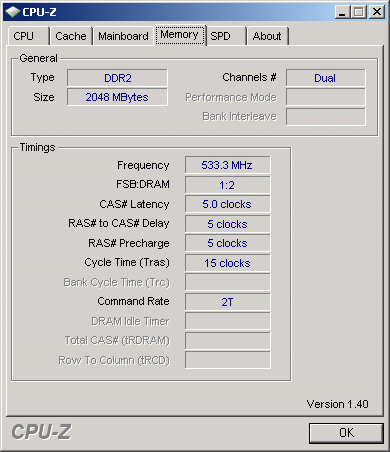The Power Saving Guide, Part 2
DDR2-1066
Finally, there are DDR2-1066 speeds, which have not been specified by JEDEC, because DDR3 was intended to take over at this speed. Still, in the past we've seen many DDR memory products that exceeded the specifications for DDR1 memory: while DDR400 (PC3200) was meant to be the end, some enthusiast brands decided to release speeds of up to DDR600. See The Geil CL1.5 DDR600 RAM Promise for more.
While the differences in power requirements were mostly negligible at 1.8 V, DDR2-1066 requires applying at least 2.0 V to ensure reliable operation. In combination with the increased clock speed (533 MHz base clock) we expected a noticeable increase. We were proved correct, as the power draw, which had been between 148 W (idle) and 193 W (load) for the 533, 667 and 800 speeds, went up to 158 W (idle) and 205 W (load). This represents an increase of over 6.5% when idle and 6.3% under full load. If you're looking for a system that is energy and cost efficient, DDR2-800 clearly is the best choice today, as DDR2-1066 requires more energy and is considerably more expensive.
Get Tom's Hardware's best news and in-depth reviews, straight to your inbox.

Patrick Schmid was the editor-in-chief for Tom's Hardware from 2005 to 2006. He wrote numerous articles on a wide range of hardware topics, including storage, CPUs, and system builds.
